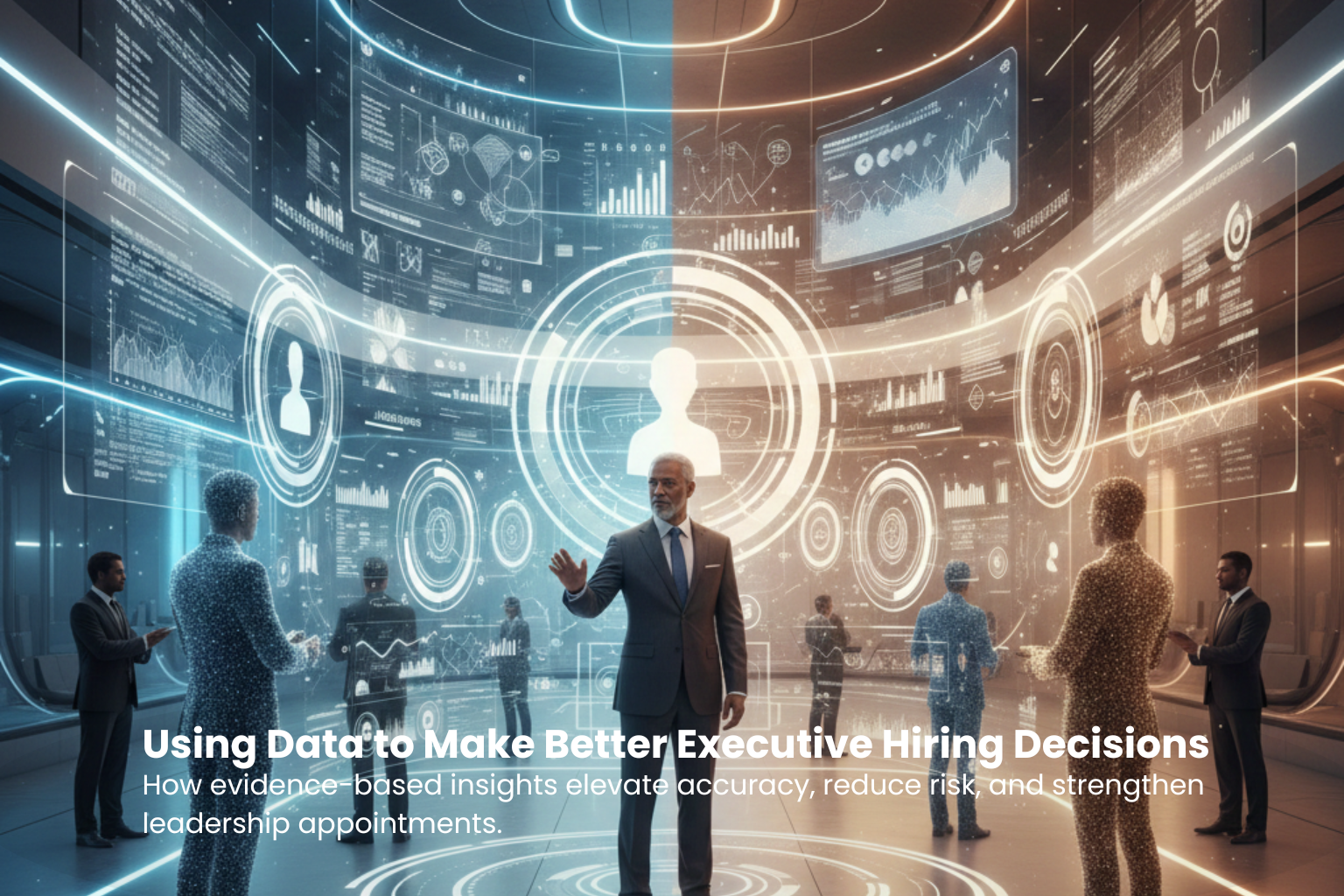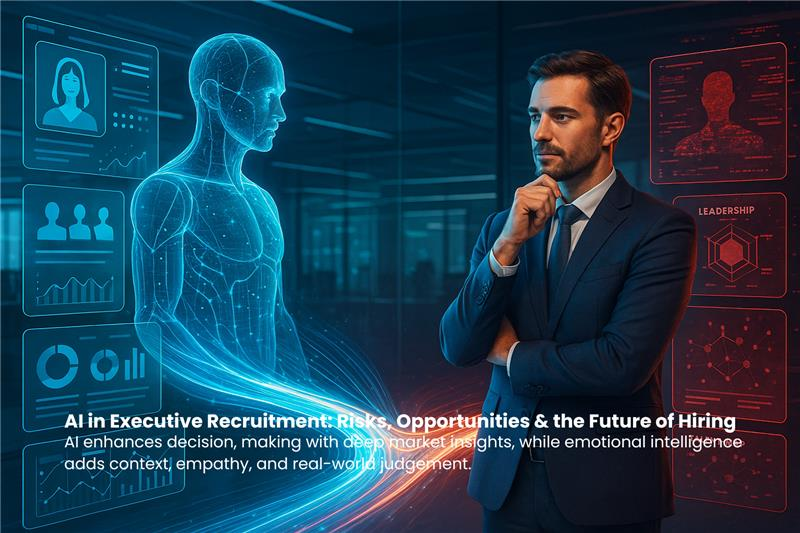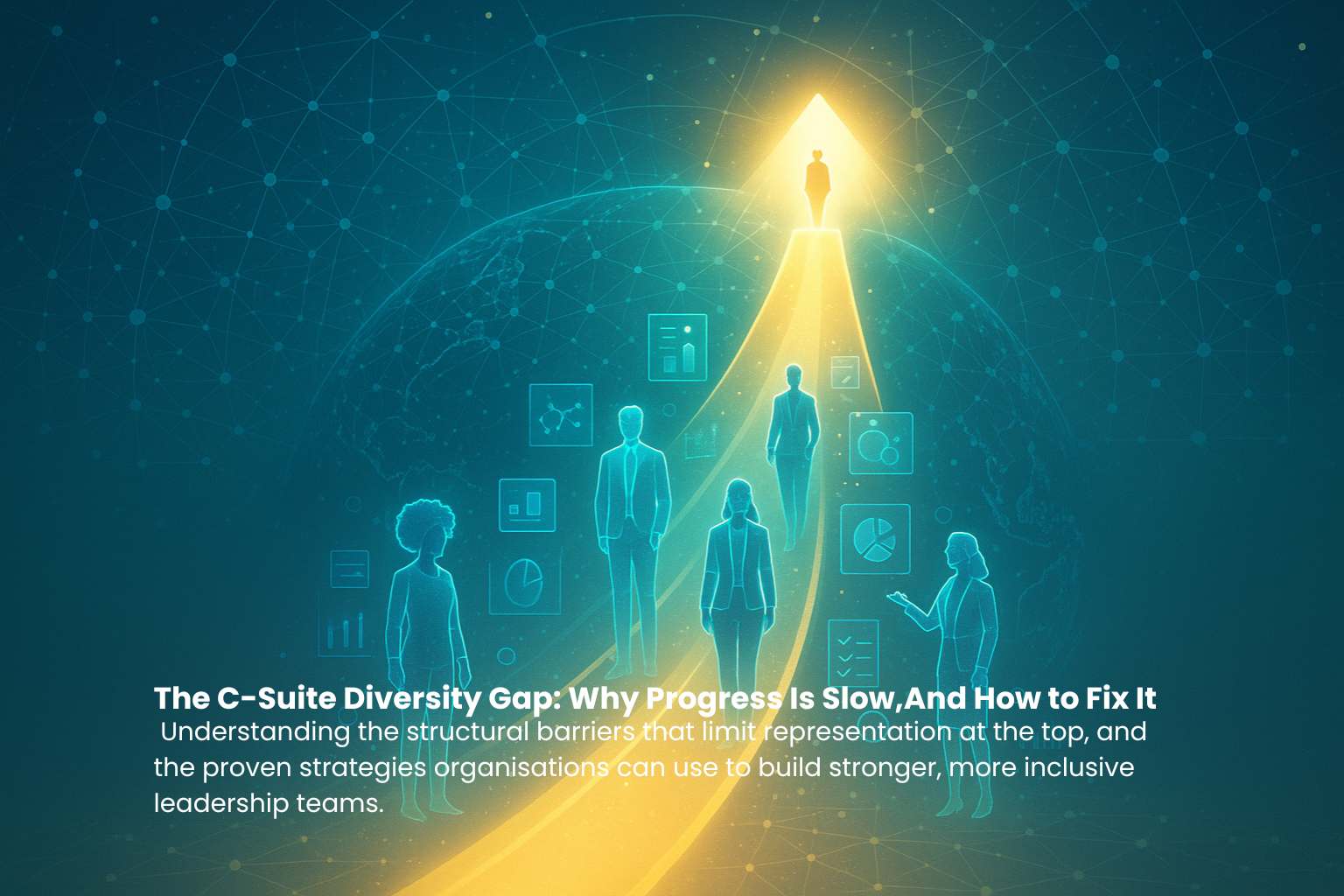Using Data to Support Better Hiring Decisions for Executive Appointments 📊👔
Using Data to Support Better Hiring Decisions for Executive Appointments 📊👔

Hiring the right executive is one of the most important decisions an organisation can make. Senior leaders don’t just influence day-to-day operations, they shape strategy, culture, and long-term success. Yet, despite this critical impact, executive appointments are often based on intuition, personal networks, or “gut feeling.”
At Wyman Bain, we believe in combining experience with evidence. By leveraging data-driven insights, organisations can make more informed, objective, and reliable hiring decisions, reducing risk and improving outcomes for both the business and the executive.
Why Data Matters in
Executive Hiring 🧠💡
Traditional hiring methods often focus on CVs, interviews, and references. While valuable, these tools are inherently limited. They provide a snapshot of past experience but rarely reveal the candidate’s potential to thrive in a specific organisational environment.
Data, when used effectively, changes this dynamic:
- Reduces bias ⚖️ – By focusing on measurable competencies and predictive indicators, hiring teams are less likely to rely on subjective opinions.
- Predicts performance 📈 – Metrics such as past achievements, team outcomes, and psychometric insights can indicate how a candidate might perform in a new role.
- Supports strategic alignment 🎯 – Analysing skills, leadership style, and experience ensures alignment with organisational goals and culture.
- Improves retention 🔄 – Selecting executives who fit both operationally and culturally reduces turnover and associated costs.
Key Data Points for Executive Appointments 📌
When integrating data into executive hiring, it’s important to consider a broad range of insights:
1. Competency Assessments ✅
Assessments provide a structured way to evaluate a candidate’s abilities against the requirements of the role. They allow hiring teams to see beyond experience and CV credentials to identify core skills, problem-solving capacity, and strategic thinking abilities.
2. Psychometric Testing 🧩
Understanding personality traits, leadership style, decision-making tendencies, and emotional intelligence helps predict how a candidate will interact with teams, stakeholders, and the wider organisation.
Historical data, such as achievements in previous roles, team performance metrics, and business outcomes, provides a predictive lens for future success. For example, how a leader managed growth initiatives or navigated organisational change can indicate their capability in similar future scenarios.
4. Cultural and Strategic Fit 🌐
Organisational culture is critical in executive appointments. Surveys, behavioural interviews, and predictive modelling help determine whether a candidate’s values, work style, and approach align with the organisation’s mission and long-term strategy.
5. Network and Influence Mapping 🔗
For senior roles, the ability to influence and mobilise stakeholders is essential. Data can help map networks, identify key influencers, and evaluate a candidate’s potential impact internally and externally.
Benefits of a Data-Driven Approach 🌟
Adopting a data-led approach offers measurable advantages:
- More confident decision-making 💪 – Reduces uncertainty by complementing human judgement with evidence.
- Enhanced diversity and inclusion 🌈 – Objective metrics ensure fairer evaluation across gender, ethnicity, and background.
- Time and cost efficiency ⏱️💷 – Streamlined assessments and data-backed shortlisting save resources.
- Improved long-term outcomes 🚀 – Appointments aligned to culture, strategy, and capability lead to higher engagement, productivity, and business growth.
Practical Steps for
Implementing Data in Executive Hiring 🛠️
- Define key competencies and outcomes – Identify the skills, experience, and behaviours essential for success in the role.
- Select appropriate data sources – Combine CVs, references, performance records, psychometric results, and cultural alignment assessments.
- Use predictive analytics – Leverage algorithms and historical performance data to identify candidates with the highest potential.
- Integrate human insight – Data should complement, not replace, judgement. Ensure decision-makers review and contextualise the insights.
- Monitor and refine – Track executive performance post-appointment to continuously improve hiring processes and predictive models.
How
Wyman Bain Supports Executive Hiring 🏢
At Wyman Bain, we guide organisations through every stage of the executive appointment process:
- Identifying role-specific requirements and competencies.
- Designing assessments and data frameworks to evaluate candidates objectively.
- Combining analytics with human insight to make confident, informed decisions.
- Ensuring cultural and strategic alignment for long-term organisational success.
Our approach doesn’t just select the right person, it reduces risk, enhances diversity, and ensures leaders can make a real impact.
Conclusion ✨
Executive hiring is too important to leave to chance. By leveraging data intelligently, organisations can make appointments that are fairer, more informed, and more likely to succeed. Data doesn’t replace intuition, it sharpens it, giving leaders the confidence that they are making the best possible choice for their business.
At Wyman Bain, we help companies turn data into decisions, ensuring every executive appointment sets the stage for long-term success.



